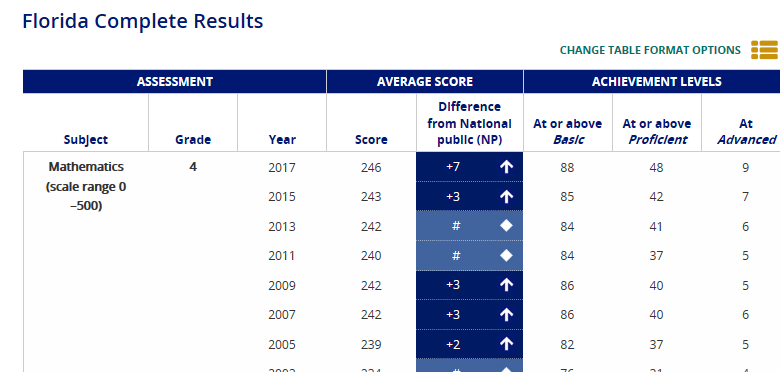
Stanford’s Sean F. Reardon released a new data tool last week allowing the user to view academic scores and gains by school, district (with charters included) and county. One of the visualization tools allows you to track the academic growth in grades 3-8 for every school covering those grades in a state. This measure does not look good for Florida:
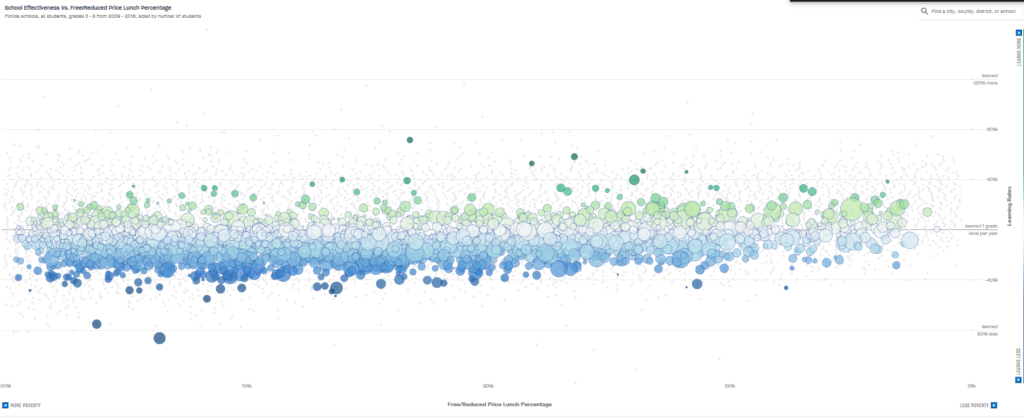
The horizontal axis of this chart runs from 100 percent free- or reduced-lunch eligible (left side) to 0 percent (right side). Each dot represents an individual public school, and the color scheme denotes a lot of academic growth (dark green) to below-average academic growth (dark blue). Florida’s chart above has a lot of blue and not so much green. For example, see high-growth Arizona’s chart:
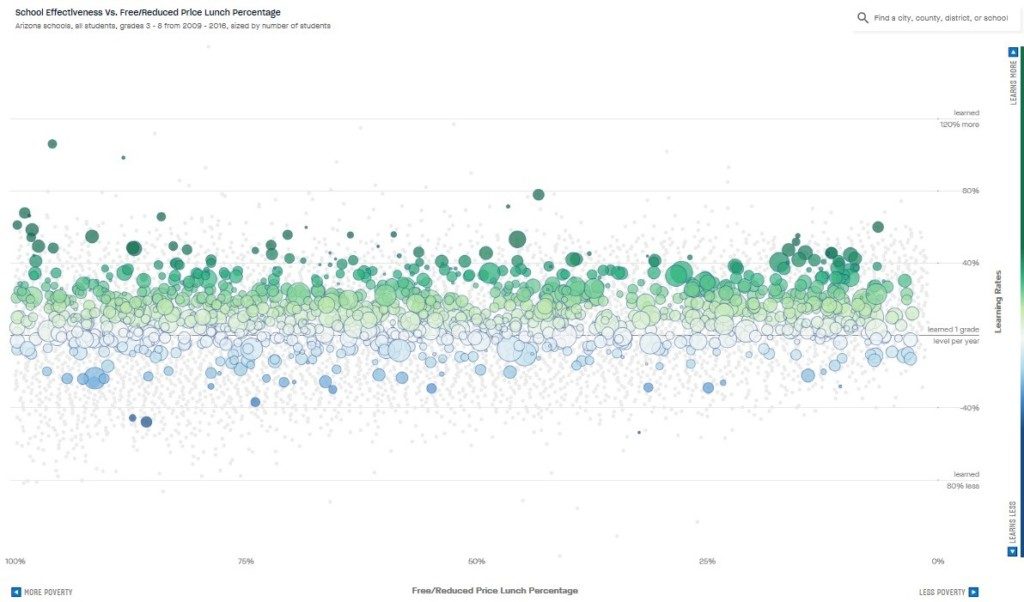
Arizona is rolling in the green compared to Florida! Time to celeNAEP good times in Arizona!
Well, OK, let’s take a close look at this before getting the Kool and the Gang brass section going. It turns out this pattern has been evident in Florida’s NAEP data for years.
Below are Florida’s fourth- and eighth-grade NAEP math scores:
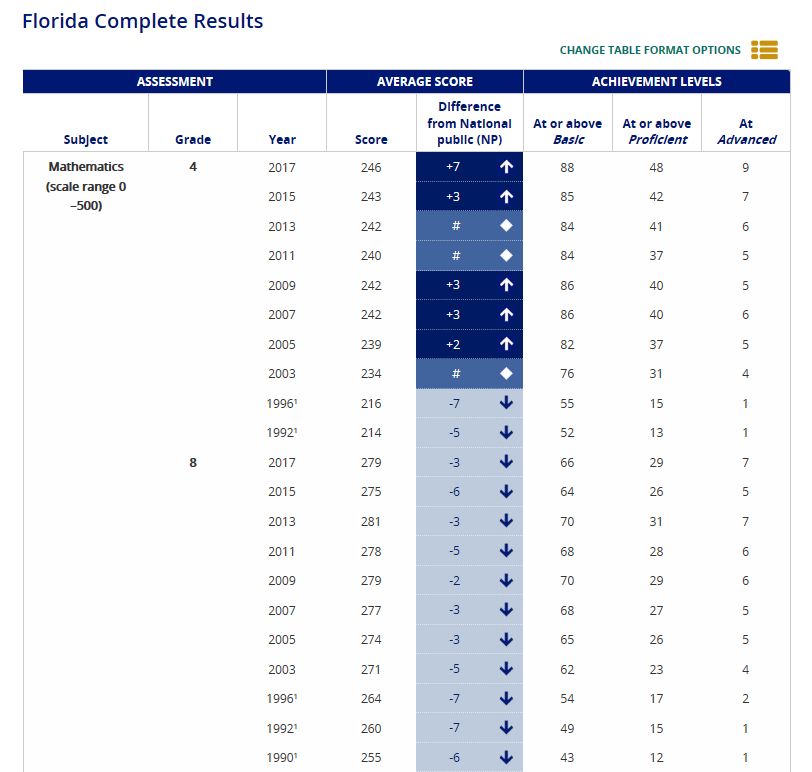
This is all the Florida math data from oldest to newest at the time of this writing. Going back in our way-back time machine to 1996, Florida students were seven points below the national average on both fourth- and eighth-grade math. Those were large and statistically significant differences. Move the clock forward to 2017 and Florida students had a seven-point advantage over the national average in fourth-grade math, and a three-point deficit in eighth-grade math.
We can calculate a cohort gain by looking at the fourth-grade scores for a group of students, and then their eighth-grade scores four years later. For example, in 2011 Florida’s fourth-graders scored 240, and in 2015 as eighth-graders the same cohort of students scored 275. That’s a cohort gain of 35, and that doesn’t look so hot. This is similar to what Dr. Reardon is presenting in the charts above.
Now let’s look at the same data for Arizona:
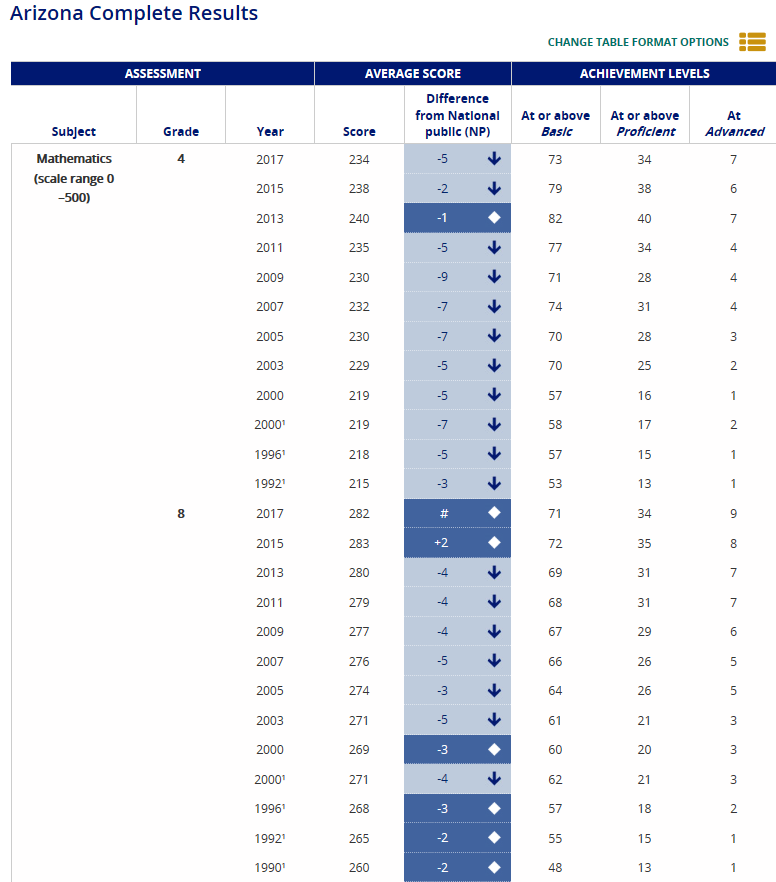
Arizona fourth-graders scored 235 in 2011, and then 283 in 2015 for a cohort gain of 48 points — the highest in the country. Note, however, that five of the 13 points separating Arizona and Florida came simply because Florida had higher fourth-grade scores than Arizona in 2013. Moreover, if we repeat this procedure between 2013 and 2017, Arizona’s cohort gains shrinks to 42 points — mostly because fourth-grade math scores increased by five points between 2011 and 2013, but eighth-grade scores did not improve.
So, what to make of all of this?
I like the fact that Arizona students seem to be learning about math and reading between fourth and eighth grade. I especially like seeing all those green dots on the high poverty side of the graph. It’s a (hopefully) good sign. Florida’s strong emphasis on the early grades leads to faster progress on fourth-grade scores than eighth-grade scores. Florida’s eighth-grade scores have improved, but not at the rate of the fourth-grade scores.
Ultimately, what is most important are not your fourth- or eighth-grade NAEP scores, or the difference between the two of them, but rather your long-term outcomes. I can’t even recall what math I studied in eighth grade, but I do remember graduating from high school, attending college and graduating from college. Here’s what is going on at Florida’s two-year community colleges:
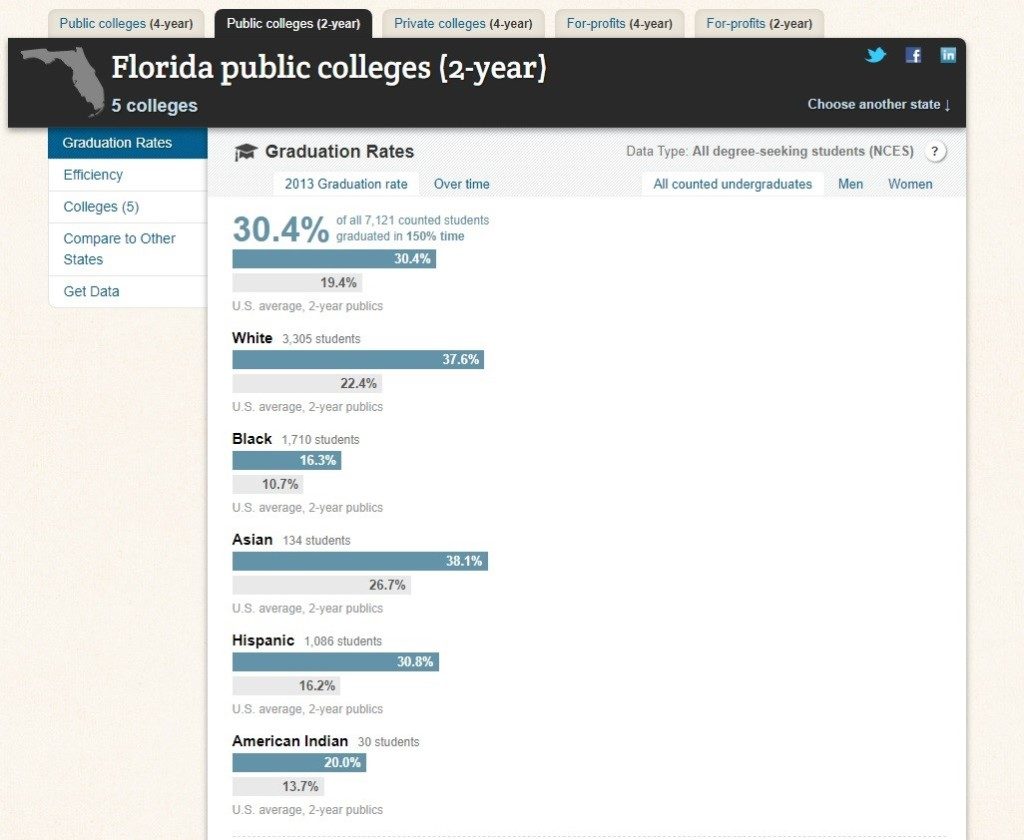
Florida students have a higher graduation rate across subgroups.
Here’s the public four-year data:
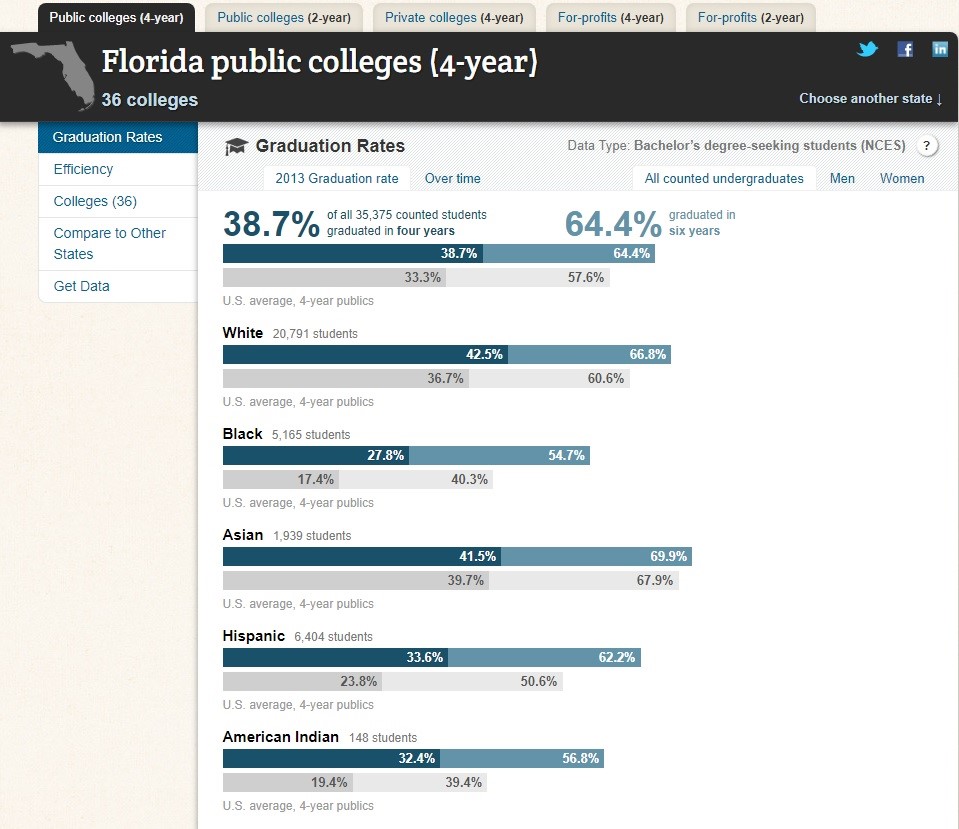
Florida’s NAEP scores up, high school graduation rates up, college graduation higher than the national average overall and across subgroups. The case made here is not that Florida education is great but that it has improved.
NAEP releases 2019 data in late October, so let’s see what happens next.



[…] outside my little bubble, there is little concern about this issue. As Ladner said in a recent post, “Florida’s NAEP scores up, high school graduation rates up, college graduation higher than […]